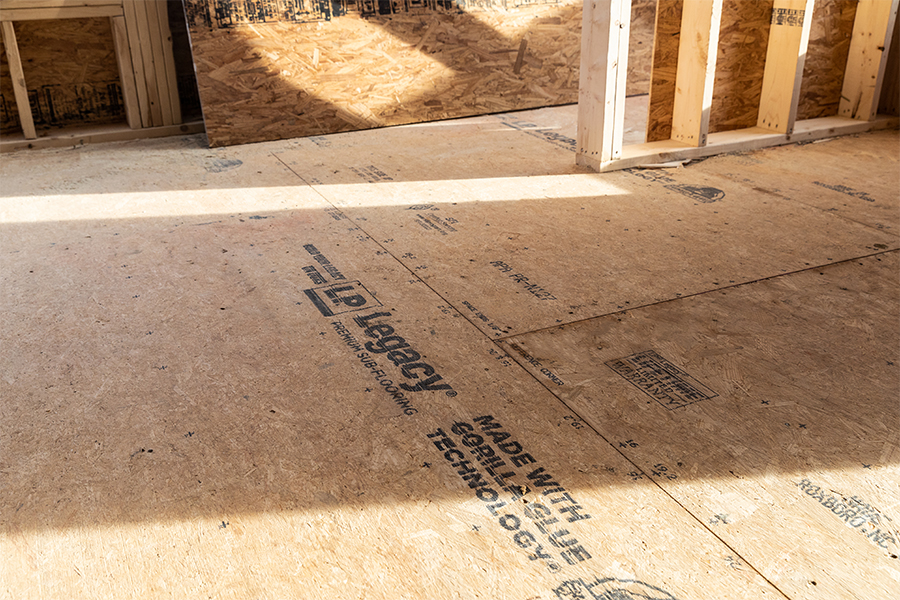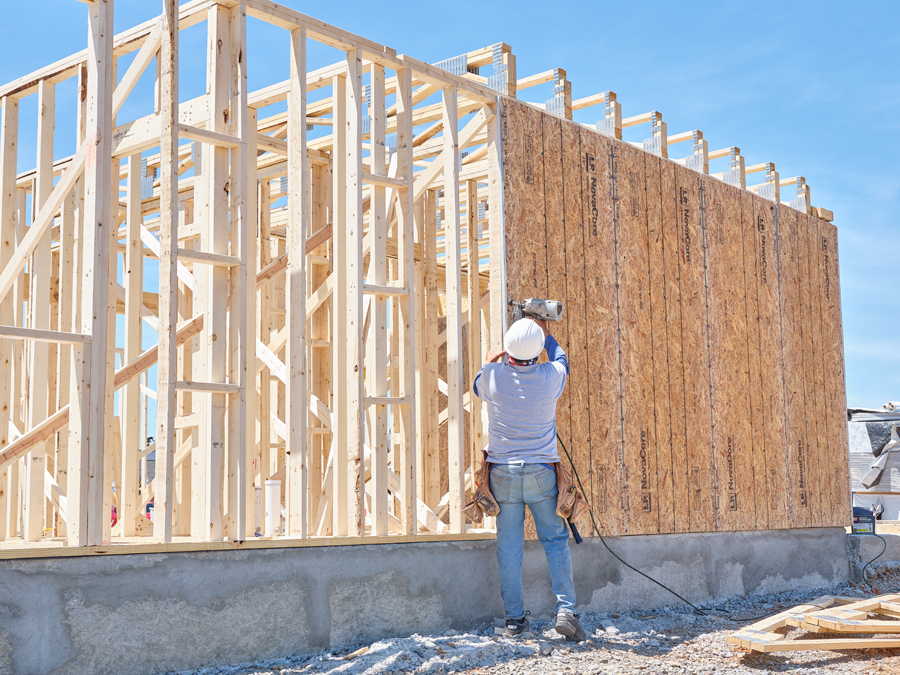Industry Trends6 min
Embodied Carbon Emissions in Buildings: Ways to Measure and Reduce Carbon Emissions
While many in the construction industry are focusing on building net zero, or zero energy ready, homes and improving sustainability and resiliency, carbon emissions during product manufacturing and transport and the building of the home present an additional concern. This amount, called embodied carbon emissions, must be considered when evaluating the overall sustainability of building materials.
LP leads the industry in combating embodied carbon emissions with carbon negative products, such as LP® SmartSide® Trim & Siding. This is part of the company’s overall mission of Building a Better World™. All LP products are made from sustainably and ethically harvested wood fiber and leading carbon lifestyle attributes to ensure LP does its part in leaving the world a better place.
Let’s take a look at some frequently asked questions about embodied carbon emissions and how we can reduce their impact.
Q. What Is Embodied Carbon Emissions in Buildings?
A. The definition of embodied carbon is the carbon footprint of a building or home before it is occupied. It specifically refers to the emissions associated with harvesting raw materials, transporting all components to the factory, manufacturing of the products, transporting finished products to the distributor and then finally to the jobsite. Each stage of the process can generate greenhouse emissions. The total amount depends on the amount of fossil fuels (like natural gas, propane, diesel) or the amount of energy from non-renewable energy sources, like coal-powered energy plants, used in manufacturing. These factors can determine the overall environmental footprint and an operation’s carbon emissions.

Operational carbon emissions are defined a bit differently. Embodied carbon vs. operational carbon measures the emissions while the building is occupied and includes heating and cooling, electricity and energy for the lifetime of that structure.
Q. Why Is Embodied Carbon Emissions in Buildings Important?
A. To reduce greenhouse gases, we need to look beyond operational carbon emissions and examine the full lifecycle of buildings.
The sum of all greenhouse gas emissions resulting from mining, harvesting, processing, manufacturing, transportation and installation greatly impacts global warming. Embodied carbon from the construction industry contributes nearly 40% of greenhouse gases, and this trend is expected to accelerate unless construction professionals can work together to reduce the sector's carbon footprint.
Q. What Can Builders Do to Reduce the Embodied Carbon Footprint?
A. Choose materials that store carbon whenever possible. Wood products have lower embodied carbon and store more carbon simply because they originate from wood over other building materials like concrete—which has higher embodied carbon emissions.
“Wood is a renewable material, and our LP SmartSide and commodity OSB products store more carbon than is emitted during the manufacturing process,” says Donna Kopecky, Director of Sustainability and Public Policy at LP Building Solutions.
She also recommends being more mindful of how siding and other wood products are being used on jobsites to ensure less waste is generated during construction and sent to landfills.

Q. Is There an Embodied Carbon Calculator?
A. Studies called “lifecycle assessments” look at all phases of the building materials’ lifespan and provide a measurement of the materials’ embodied carbon footprint. Two primary data points are measured: 1) embodied carbon in a product and; 2) embedded, which is carbon stored in the product.
Builders and architects use data from environmental product declarations (EPDs) to evaluate specific building materials and choose products that help reduce the building’s overall carbon footprint.
Q. Can You Provide an Example of an Environmental Product Declaration?
A. LP Building Solutions is on the forefront of sustainable building practices and has environmental product declarations for several of its products, including LP® SmartSide® Trim & Siding.
"This EPD demonstrates the overall impact of LP SmartSide Trim & Siding products across their entire lifecycle," says Kopecky. "EPDs help architects and developers make informed decisions when sourcing lower embodied carbon building products, helping them satisfy requirements for their green building projects."
The EPD shows that LP SmartSide Trim & Siding is a carbon-negative product; it stores more carbon than what is emitted during the manufacturing process, making it an excellent choice for green building solutions.
Learn more about LP SmartSide Trim & Siding’s Environmental Product Declaration.
Q. What’s Next in Embodied Carbon for Building Materials?
A. Kopecky says both science and public policy will continue to focus on the decarbonization of the building environment. “In order for us to play an active role in the whole building lifecycle assessment space, we need to continue innovating sustainable wood building solutions that support carbon-neutral wood-based products.”
The company is committed to LP’s Policy on Environmental Stewardship. “We are continuously working to improve our forest management practices to help mitigate and adapt to our changing climate, including practices that support prompt forest regeneration after harvest. These practices help to enhance carbon sequestration as new forests grow after harvest,” says Kopecky.
As you can see, LP practices great care and intention in manufacturing its products in order to promote a greener future. Want to see more details about how engineered wood is made? Take a look at our process to learn more.
Continue Reading
Resiliency Solutions
5 minIntroducing LP® SmartSide® ExpertFinish® Naturals Collection™: Nature-Inspired Beauty Meets Engineered Performance
We’re excited to introduce the LP® SmartSide® ExpertFinish® Naturals Collection™, a bold new addition to our trusted line of engineered wood siding and trim that delivers the warmth and beauty of nature with the advanced protection and performance builders and homeowners expect.
Labor Solutions
5 minChoosing the Right LP® Structural Solutions Product for Your Build
When it comes to building strong, reliable, and high-performing structures, the materials you choose matter. At LP Building Solutions, we understand that every project, whether it's a single-family home or a multifamily development, requires structural components that meet your needs for strength, durability, and efficiency.
Sustainability Solutions
5 minBuilding a More Sustainable Future with LP Building Solutions
In today's world, sustainability is no longer just a buzzword, it's a blueprint for responsible living and smarter building. As the construction industry seeks ways to reduce its environmental footprint, LP Building Solutions is focused on providing innovative building materials for eco-conscious builders to help reshape what it means to build sustainably
News & Stories3 min
History of Partnership with Gary Sinise Foundation
The LP Foundation is a proud partner of the Gary Sinise Foundation, which supports wounded veterans in several ways. You can learn more about the LP Foundation here.